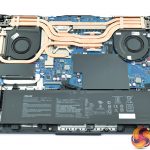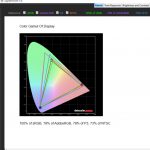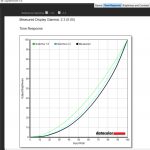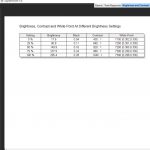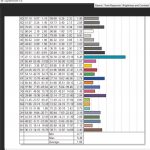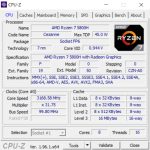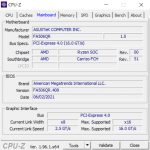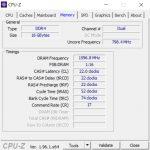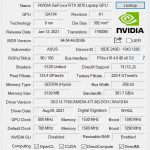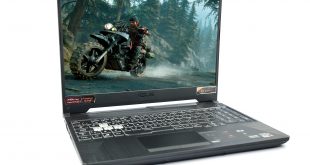
After previously reviewing the MSI GE76 Raider, a machine priced at over £4000, today we are analysing something rather more affordable – the ASUS TUF Gaming A15 (2021), hitting the market at £1599.99. While still not a small investment, for the money you are getting an 8-core Ryzen 7 5800H, Nvidia's RTX 3070 Laptop GPU, 16GB DDR4 memory and a 1TB SSD, complemented by a 240Hz IPS-level display. It sounds good on paper, but is there a catch?
Specifications:
- Operating System: Windows 10 Home – ASUS recommends Windows 10 Pro for business
- Processor: AMD Ryzen™ 7 5800H Processor 3.2 GHz (16M Cache, up to 4.4 GHz)
- Graphics: NVIDIA® GeForce RTX™ 3070 Laptop GPU,Up to 1510MHz at 90W (95W with Dynamic Boost),8GB GDDR6
- Display: 15.6-inch, FHD (1920 x 1080) 16:9, anti-glare display, sRGB:100.00%, Adobe: 75.35%, Refresh Rate: 240Hz,IPS-level
- Memory: 8GB DDR4-3200 SO-DIMM x 2, Max Capacity : 32GB
- Storage: 1TB M.2 NVMe™ PCIe® 3.0 SSD
- I/O Ports:
- 1x 3.5mm Combo Audio Jack
- 1x HDMI 2.0b
- 3x USB 3.2 Gen 1 Type-A
- 1x USB 3.2 Gen 2 Type-C
- Keyboard and Touchpad: Backlit Chiclet Keyboard RGB
- Camera: 720P HD camera
- Audio:
- AI mic noise-cancelling
- DTS software
- Built-in array microphone
- 2x 2W speaker
- Network and Communication: Wi-Fi 6(802.11ax)+Bluetooth 5.2 (Dual band) 2*2;(*BT version may change with OS upgrades.)
- Battery: 90WHrs, 4S1P, 4-cell Li-ion
- Power Supply: ø6.0, 200W AC Adapter, Output: 20V DC, 10A, 200W, Input: 100-240V AC, 50/60Hz universal
- Weight: 2.30 Kg (5.07 lbs)
- Dimensions (W x D x H): 35.9 x 25.6 x 2.28 ~ 2.43 cm (14.13″ x 10.08″ x 0.90″ ~ 0.96″)
Kicking off with a look at the design of the TUF Gaming A15, this machine is fairly average in terms of its overall heft and bulk. It's clearly not as svelte as ASUS' Zephyrus line of premium laptops, but nor is it quite as chunky as a 17.3in desktop replacement. It weighs 2.3KG and measures 35.9 x 25.6 x 2.28 ~ 2.43 cm.
In terms of the styling, the large ‘TUF' branding written on the lid is somewhat of a giveaway that this is indeed a gaming laptop, but otherwise it's not too aggressive in its design. There is an eye-catching pattern on the rear vents, but I don't think you'd be attracting too much unwanted attention if you were to use the A15 in a coffee shop.
Build quality isn't the greatest, and I think this is one area ASUS has consciously tried to keep costs down. It has a grey metal lid, but the rest of the chassis is made from plastic and I am not too keen on the brushed finish applied to the plastic surrounding the keyboard, to me it just cheapens the feel slightly. There is also a little bit of flex in the display if you give it a jiggle, while the keyboard area can also depress if pushed too hard. To be clear, I'd have no issues slinging this in a backpack, and I wouldn't see the build quality as a significant draw back – but you can tell it doesn't have the same reassuring sturdiness as a more premium laptop.
Speaking of the keyboard, this is a full-size chiclet style offering and honestly, it's pretty decent. The action on the keys offers a good amount of tactility, while there's no wobble or pre-travel, with only the smallest amount of post-travel detectable by my fingertips. It offers a healthy serving of RGB lighting too, though the keyboard is seen as a single zone rather than per-key RGB.
Just below that we find the trackpad, with two discrete buttons rather than integrated clicks. The trackpad itself is fine to use, it responded well to multi-finger gestures and didn't pose me any problems. The discrete buttons, however, are just a bit too spongy for my liking, lacking the same sort of tactility that I appreciate from the keyboard. Of course, for anything half-serious, gamers will want to use a proper mouse but a high-quality trackpad is always appreciated for general office or browser surfing.
Elsewhere, TUF Gaming A15 offers a reasonable selection of connectivity options. It's not packed to the gills, but we get 3x USB 3.2 Gen 1 Type-A plus a single USB 3.2 Gen 2 Type-C port, so you could connect a full set of peripherals if you wanted to, plus an external SSD (or anything else using the Type-C port). The Type-C connector also carries a DisplayPort 1.4 signal, while there's a full-size HDMI 2.0b output as well. Creative types may lament the lack of a dedicated SD card reader, but that's my only real complaint.
As for the display, this is an ‘IPS-level' panel, likely an AHVA panel from AU Optronics. ASUS has told us in the past it refers to its panels as ‘IPS-level' for legal reasons, as it could be liable if advertising an IPS panel when the panel is not, technically, IPS…
Still, it is a good quality unit here. We measured 100% SRGB coverage, along with 79% coverage of both the Adobe RGB and DCI-P3 colour spaces. An average delta-E of 1.84 is also a solid result for a gaming laptop and is indicative of very good colour accuracy. A peak contrast ratio of 1040:1 is decent for this panel type, with the only downsides being a slightly warm presentation at 7400K, while Gamma reports at 2.3, rather than the 2.2 ideal value.
It's a very fast display though, offering a 240Hz refresh rate. It could be easily argued that anything over 144Hz isn't really required for a gaming laptop, and I do agree for the most part. The strange thing is ASUS does offer a 144Hz option, but it appears to be a significant step-down in quality, with only a claimed 62.5% sRGB coverage for that model. I've not seen that screen in the flesh, but chances are you will want to go for the 240Hz panel option just to ensure a good overall viewing experience.
We can also note a few key areas with the internal design. ASUS is using a large 90Wh battery, alongside two SODIMM slots, both of which are occupied by 8GB DDR4 3200MHz modules. The included SSD is a 1TB M.2 SK Hynix BC711, but do note this is a PCIe 3.0 drive, so don't expect speeds over 4GB/s. There is, however, a spare M.2 slot, set at a 45-degree angle from the memory. It's a bit unusual looking, but provides an easy way to stick in more storage down the line. Lastly, we can also note Intel's WiFi 6 AX200 module positioned underneath the SK Hynix SSD.
As a final confirmation of the key specs, the CPU used here is the Ryzen 7 5800H, an 8-core and 16-thread part with a 45W power budget. This is paired with 16GB of 3200MHz DDR4 memory, with 22-22-22-52 timings. Graphics is provided by Nvidia's RTX 3070 Laptop GPU, and while not a Max-Q model, the power target is towards the lower end of the spectrum, rated at 95W maximum, though that also includes an extra 15W via Dynamic Boost.
 KitGuru KitGuru.net – Tech News | Hardware News | Hardware Reviews | IOS | Mobile | Gaming | Graphics Cards
KitGuru KitGuru.net – Tech News | Hardware News | Hardware Reviews | IOS | Mobile | Gaming | Graphics Cards








